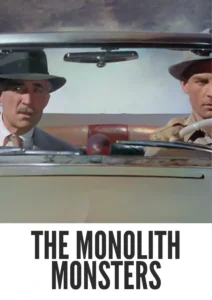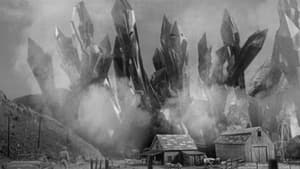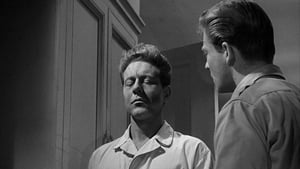Video Sources 0 Views

Download The Monolith Monsters (1957) Colorized HD | Grant Williams | Sci-Fi Horror Cult Classic
Synopsis

Delve into the chilling world of science fiction horror with The Monolith Monsters, a gripping 1957 thriller, now brilliantly colorized to amplify its terrifying impact. Starring Grant Williams and Lola Albright, this film presents a unique blend of suspense and classic monster movie elements that will captivate both genre aficionados and newcomers alike. This HD download offers a visually stunning experience, bringing a classic tale of extraterrestrial terror to life in vivid detail.
The Monolith Monsters unfolds in the small desert town of San Angelo, where a meteor shower leaves behind fragments of strange, black monoliths. These aren’t ordinary rocks; they possess the terrifying ability to grow when in contact with water, towering to immense heights.
When a young boy discovers these fragments, he unwittingly sets off a chain of events that threatens the entire town. As the monoliths grow, they crumble into billions of tiny, razor-sharp shards that turn anything they touch to stone. A local geologist, Ben Gilbert (Grant Williams), and his resourceful schoolteacher girlfriend, Cathy Barrett (Lola Albright), must race against time to find a way to stop the ever-proliferating crystals before they engulf San Angelo and turn its inhabitants into statues. The film combines elements of science fiction with classic monster movie tropes, creating a suspenseful and visually striking narrative about humanity’s struggle against an inexplicable extraterrestrial threat.
The Monolith Monsters features a talented cast that effectively conveys the growing sense of dread and urgency:
-
Grant Williams as Ben Gilbert
-
Lola Albright as Cathy Barrett
-
Les Tremayne as Martin Cochrane
-
Trevor Bardette as Professor Arthur Flanders
-
Phil Harvey as Dr. Steve Carson
The Monolith Monsters masterfully blends the genres of science fiction and horror, with strong elements of suspense and classic monster movie tropes. Its unique premise and eerie atmosphere create a captivating and unsettling cinematic experience.
Released in 1957, The Monolith Monsters reflects the prevalent anxieties of the Cold War era, particularly the fear of the unknown and unseen threats. The film taps into the widespread fascination with science fiction that defined the decade, using the monster movie format to explore themes of environmental disaster, scientific hubris, and the vulnerability of small-town America. The Monolith Monsters stands as a testament to the creative ingenuity of filmmakers during this period, who used genre conventions to address deeper social and political concerns.
This colorized version of The Monolith Monsters has been meticulously restored using modern digital techniques, enriching the visual impact while preserving the film’s original suspenseful atmosphere. The colorization process meticulously analyzed the grayscale tones of the original black and white footage, carefully assigning appropriate colors to each scene to enhance the setting and character details. Advanced algorithms for color palette selection and image enhancement were used to revitalize the story for today’s viewers. This careful process breathes new life into the characters and settings, making the story even more gripping for modern audiences.
-
: John Sherwood
-
: Jack B. Sowards, Robert M. Fresco
-
: Jack Arnold
-
: Ellis W. Carter
-
: William Blundell
-
: Universal-International
-
: Universal Pictures
-
: 77 minutes
-
: MP4
-
: HD (1080p)
-
: Compatible with most devices, including smartphones, tablets, computers, and smart TVs.
The Monolith Monsters (1957) has garnered a cult following over the years, praised for its imaginative premise, effective use of suspense, and striking visual effects. While it may not be as widely recognized as some of its contemporaries, it remains a standout example of 1950s science fiction horror. Its themes of environmental threat and the dangers of unchecked scientific advancement continue to resonate with audiences today.
-
: What is The Monolith Monsters about?
-
A: The Monolith Monsters tells the story of a small town threatened by extraterrestrial rocks that grow into towering monoliths when exposed to water.
-
-
: Is The Monolith Monsters (1957) considered a classic science fiction film?
-
A: Yes, The Monolith Monsters is a cult classic known for its unique premise and suspenseful storytelling.
-
-
: Is this version of The Monolith Monsters colorized?
-
A: Yes, this version has been professionally colorized to enhance the viewing experience.
-
-
: What makes The Monolith Monsters interesting for sci-fi and horror fans?
-
A: The Monolith Monsters offers a blend of science fiction and horror elements, creating a captivating and unsettling cinematic experience.
-
-
: What is the download format?
-
A: The download format is MP4, which is compatible with most devices.
-
-
: What resolution is the download?
-
A: The resolution is HD (1080p), providing a high-quality viewing experience.
-
Watch The Monolith Monsters Today!










